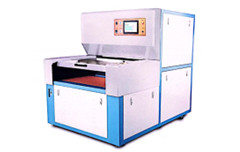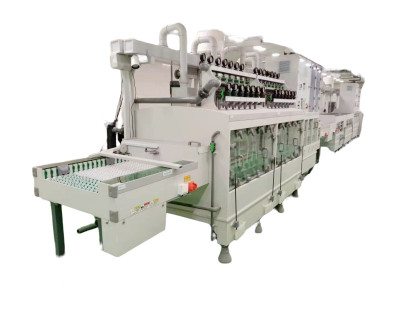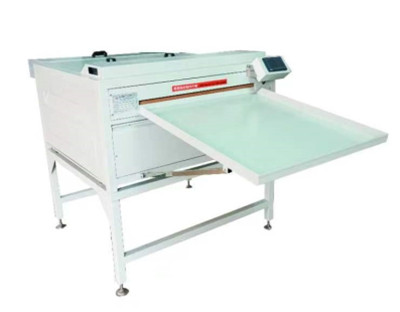Introduction
Gold is a yellow precious metal, which has excellent ductility and plasticityand is easy topolish. Gold is chemically stable and insoluble in general acids and bases. With gold as the coating, it has not only good corrosion resistance, but also strong conductivity, high temperature resistance, easy welding, and excellent discoloration resistance. There are many problems in the general thick gold plating process, such as dry film infiltration, rough coating lines, uneven thickness and other phenomena. The gold thickness is not enough to meet some special needs of Aerospace Military printed boards. Many requirements of the gold thickness of some Aerospace Military printed boards meet the category of ultra thick gold. Therefore, it is imperative to research and develop super thick gold plating process and improve the thickness of gold plating.
02 Problem analysis
The thickness of gold plating can not be improved, and gold plating is a major problem. In order to solve this problem, the current measure is to add blackening treatment before coating. The blackening film is a layer of insulating villous material, which can increase the surface area and improve the adhesion between the dry film and the copper surface of the substrate. The main process flow is: plate cutting → drilling → hole → black oxide → drawing → graphic electroplating → whole plate gold plating → alkaline etching. In the process of gold plating, the acidic solution will damage the blackened film, making the gold plating solution penetrate under the dry film to produce infiltration plating. Increasing the blackening treatment will enhance the processing ability of the positive gold platingthickness, but when the gold is thick, infiltration plating is still easy to occur, and the ultra thick gold cannot be processed. Through analysis, it is believed that hydrogen evolution reaction will occur in the process of gold plating, and the release of gas will attack the dry film, resulting in loose corrosion position on the side of the dry film, resulting in the problem of infiltration plating. At present, the impermeability of the dry film is not strong. Therefore, after careful investigation, we selected three kinds of dry films FX (a), GPM (b), H-N (c) and compared the impermeability of these three kinds of dry films and the ability of gold plating.
03 Scheme design
Plate selection: microwave plate f4b-2. (2) Selection of conductive pattern: a customer board is used as the experimental pattern (Figure 1), the minimum line width of the line layer is 0.1 mm, the ground surface is covered in a full figure, and the gold-plated area on both sides is (0.23/0.4) DM2, which is currently difficult to process.

3) Experimental scheme experimental process: drilling → poring → secondary plating → blackening → drawing → gold plating → alkaline etching. The keyparts are drawing and gold plating. Gold plating scheme: two experimental boards, each with gold-plated dry film GPM (b), fine circuit dry film FX (a) andgold-plated dry film H-N (c), at the same gold-plated current density of 0 At a/dm2, compare the plating resistance of the three dry films. Experimental datacollection: gold thickness after gold plating, take a measurement point from each plate and calculate the average value; After gold plating, observe whether there is infiltration plating on the plate surface; After etching, observe whether there is excess coating on the edge of the board surface pattern, and test the adhesion of the coating with 3M 00# tape.
(1) The GPM (b) experimental results of gold-plated dry film show that at thecurrent density of 0 At a/dm2, after the plating time exceeds min, the gold-plated plate with gold-plated dry film GPM (b) appears slight infiltration. At this time, the controllable gold plating thickness is 0.23 μ m。 The coating adhesion test is qualified (2) The experimental results of fine line dry film FX (a) show that the current density is 0 At a/dm2, after the plating time exceeds 4 min, the gold plating plate using fine line dry film FX (a) appears infiltration plating. At this time, the controllable gold plating thickness is 0.4 μ m。 The coating adhesion test is qualified. (3) The experimental results of H-N (c) gold plating dry film show that H-N (c) gold plating dry film can effectively improve the phenomenon of gold plating without blackening the copper surface, and there is still no gold plating at 2 min. at this time, the average gold thickness is 2.013 μ m. And the adhesion test of gold coating is qualified. The above experiments show that using H-N (c) gold plating dry film can effectively solvethe problem of infiltration plating, and improve the processing capacity of goldplating thickness to 2.0 μ m。
04 Process optimization and verification
Since the current gold-plated plate is prone to infiltration plating, the surface blackening treatment is added before sticking the dry film. However, H-N (c) has strong impermeable plating ability. In order to optimize the process flow, this process is considered to be removed. The new process was verified. 1 process flow the process flow after removing the blackening process: blanking → drawing → gold plating → alkaline etching 2 experimental design selected graphics (a client board), on 2 experimental boards Apply the special dry film H-N(c) for gold plating. See Table 1 for the film and exposure parameters.
|
Film laminating exposure parameters |
||||
|
Laminating pressure |
Laminating speed |
Transfer speed |
Exposure grade |
Exposure Energy |
|
0. MPa |
110C |
1.03m/min |
grade |
120mj/cm2 |
In addition, dry the plate for 10 minutes before coating, place it for 1 minute after coating for exposure, and place it for 2 minutes after exposure for development. Bake the plate at 12 ℃ for 10min before gold plating. Under the samegold plating parameters (current density 0.a/dm2), the plating time was 20 minand 30 min respectively, and the difference in the impermeability of the dry film was observed. Experimental data collection: measure the thickness of gold after gold plating, take a measuring point from each plate, calculate the averagevalue, observe whether there is infiltration plating on the plate surface after gold plating, observe whether there is excess coating on the edge of the plate surface pattern after etching, and test the adhesion of the coating with 3M 00# tape.
3 experimental results ① experimental sample (Fig. bellow)
1) There is no infiltration on the plate surface before gold plating for 20 minutes, and the edges of the lines are neat after etching. (2) slight infiltration occurs before gold plating for 30 minutes, and there is a small amount of excess coating on the edges after etching, which can be repaired manually.
② Thickness and adhesion test of gold plating in the new process (Table 3)
It can be seen that H-N (c) gold plating dry film can still effectively improve the phenomenon of gold plating without blackening the copper surface, and the controllable range of gold thickness is 2.0 μ m. The adhesion test of gold coating is qualified, which shows that the process of removing the blackening process is reasonable and feasible.
05 Results and conclusions
Through the cause analysis, the scheme is put forward and verified. It is confirmed that the key to improve the gold plating thickness is to solve the problem of infiltration plating, and the gold plating dry film H-N (c) can effectivelyimprove the infiltration plating. After using this dry film, the gold plating thickness can be increased to 2.0 μ m. In addition, the blackening process is reduced, the process flow is optimized, the production progress is accelerated, and the product processing capacity is improved. According to the data statistics in the past year, the ultra thick gold-plated printed boards manufactured by this technical process can meet the quality requirements of aerospace military industry.








 Jun. 13, 2022
Jun. 13, 2022 




